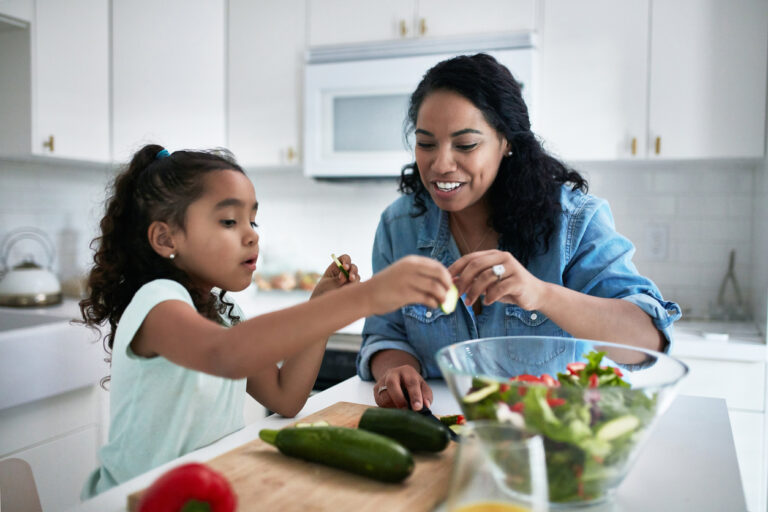A balanced diet of proteins, carbohydrates and veg beats processed food every time. Essential for good health and nutrition, it protects against such chronic diseases as cancer, diabetes and heart disease.
Educating children about why salmon and broccoli is a better choice than fried chicken and French fries can help lay the foundation for a lifetime of wellness. Below, a few strategies for helping make diet and healthy eating a habit:
Lead by example
Children are always watching; it’s essential to model a balanced diet of fruits, vegetables, lean proteins, and whole grains. Show enthusiasm for trying new foods and flavours, and avoid negative comments about certain foods.
Get your kids in the kitchen
Take your children grocery shopping and have them pick out fresh vegetables and fruits. Talk to them about your food choices; explain the nutritional benefits of different foods and why balance is key. In the kitchen, let them participate in age-appropriate cooking tasks: washing vegetables, stirring ingredients and making/assembling simple meals.
Turn off the devices
Serve meals at set times, regularly. When you can, eat as a family without distractions like television, electronic devices or books. When you eat without paying attention to your food, its texture, taste and aroma, there is a greater chance that you might overeat. You tend to continue eating and finish without realising your body and brain’s signal that you are full.
Teach portion control
Help children understand appropriate portion sizes by using visual aids and practical examples. Show them how to use their hands or everyday objects to estimate serving sizes. Encourage mindful eating by teaching children to listen to hunger and fullness cues; stop eating when they feel satisfied rather than finishing everything on their plate out of obligation. Avoid using food as a reward or punishment; celebrate achievements with non-food rewards or experiences.
Promote variety and balance
Emphasise the importance of eating a variety of foods from all food groups. Teach children to “eat the rainbow” by consuming a colourful array of fruits and vegetables so they get a wide range of nutrients to help them stay healthy. Introduce them to new dishes gradually, one at a time. Put only a small amount of a new food on their plate so they are not overwhelmed; be mindful that it can take several attempts before they try it and even more before they begin to enjoy it.
Take them to the grocery store
Involve them in meal planning to encourage ownership of their food choices. At the supermarket, have them put their food choices into the shopping cart. Meanwhile, teach children to become savvy consumers by helping them decipher food labels and understand marketing tactics. Discuss the difference between whole foods and processed foods, and encourage them to question advertising claims. Empower them to make informed choices based on nutritional value rather than packaging or popularity.
Lead discussions, not lectures
Encourage questions about food and nutrition remembering not to be judgemental with your response. Talk about food choices, have them plan a balanced meal and make it. Avoid calling certain foods “good” and other foods “bad” – all foods have their place. Use age-appropriate language and tailor information to their level of understanding.
With such strategies in place, parents and caregivers can empower children to make healthy food choices that will ultimately support their overall wellbeing. Remember, the goal is to help them understand how a balanced diet can provide nourishment that sets them up for a healthy life.

